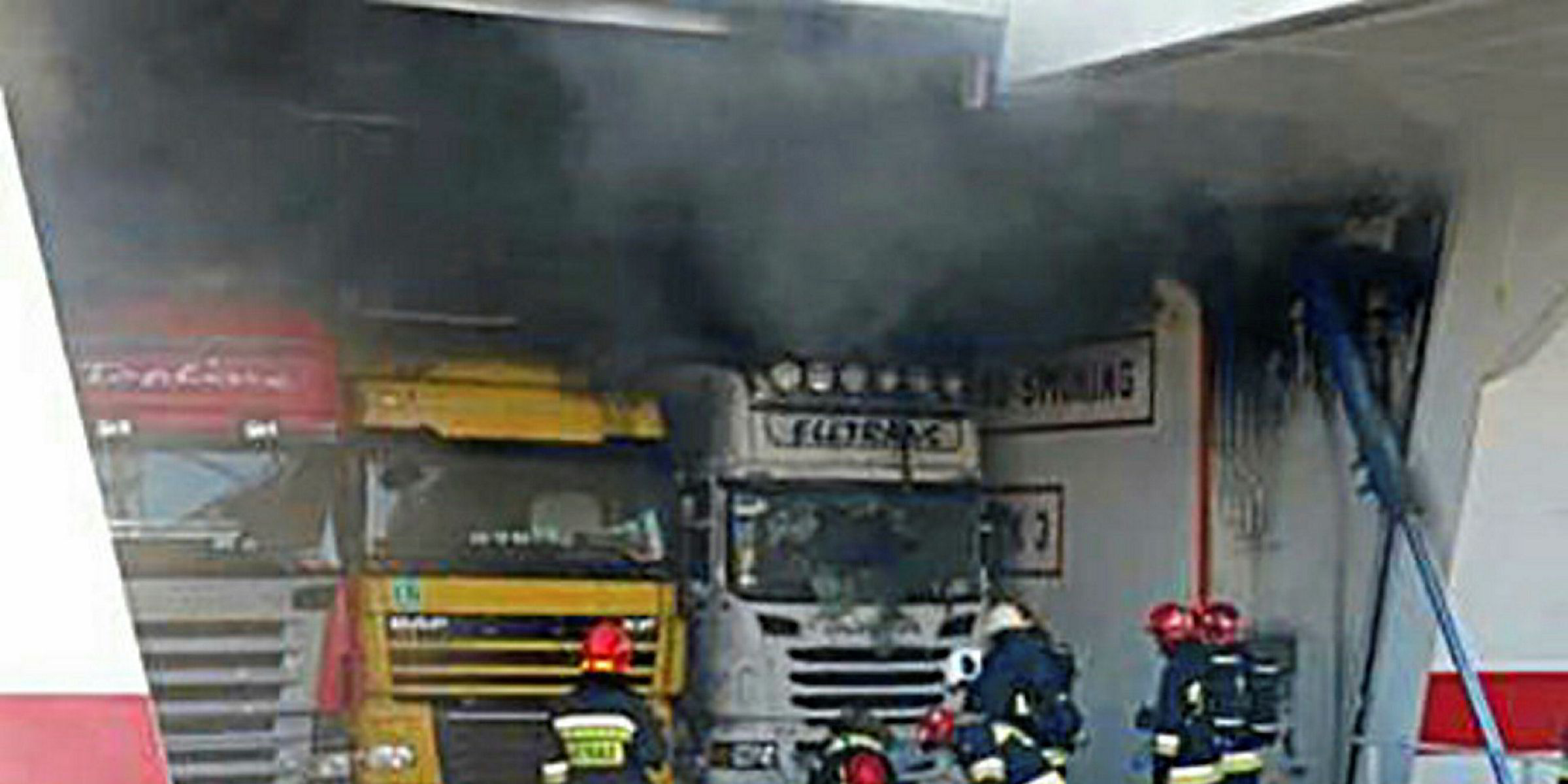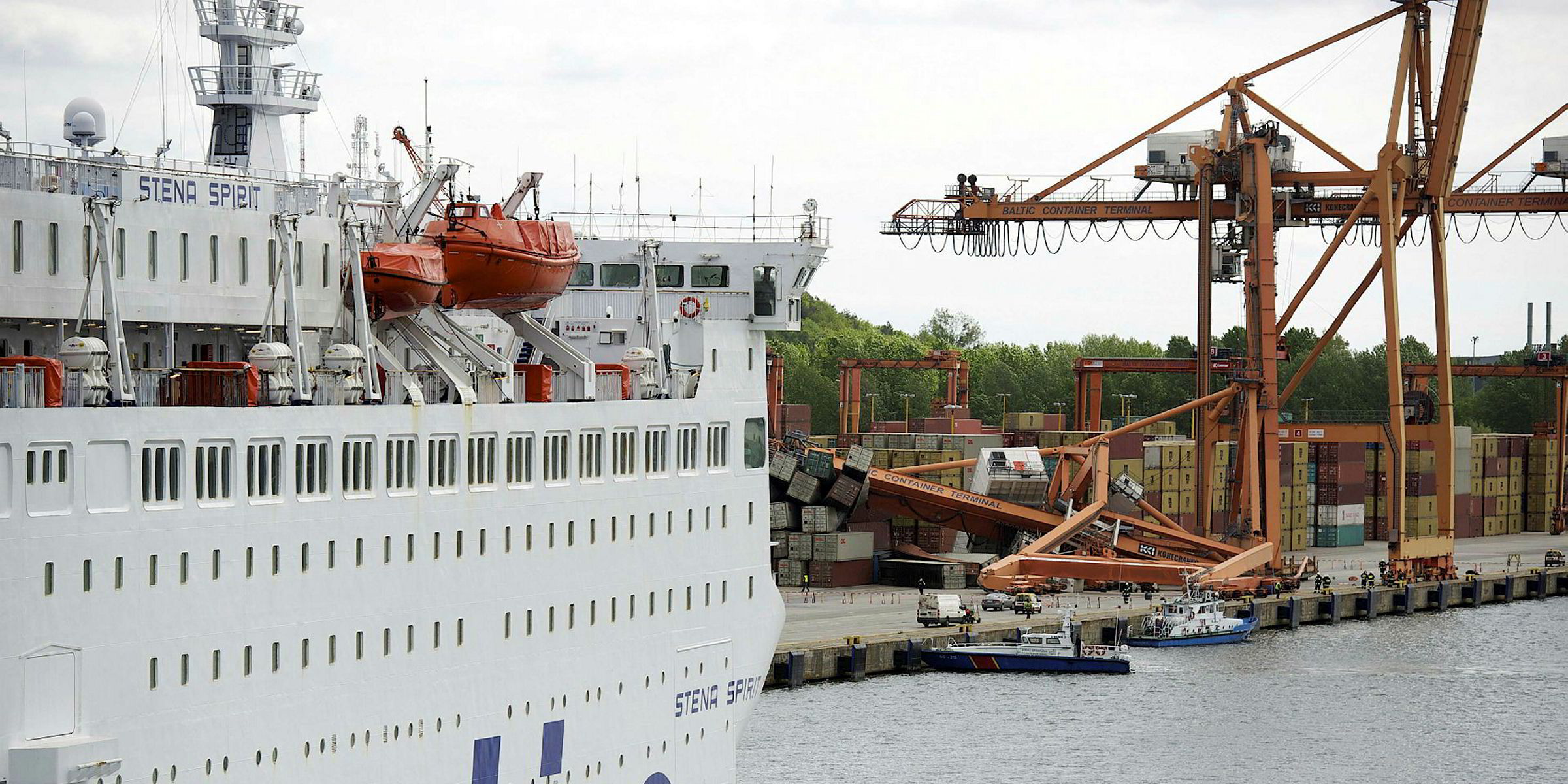Poland wants regulators to act on ro-ro passenger (ropax) safety after an investigation into a fire on a Stena Line ship at the port of Gdynia in August last year.
The findings of the investigation of the incident on the Bahamas-registered 39,193-gt Stena Spirit (built 1988) were released this week in a report jointly issued by Poland’s State Marine Accident Investigation Commission (SMAIC) and the Bahamas Maritime Authority.
The fire broke out on a truck’s refrigerator unit in the aft part of the vessel as it was entering Gdynia at 6am.
The flames spread to the roof of the truck and the ceiling, where hydraulic pipes were located. Critically, smoke from the blaze filled the decks and staircases, restricting evacuation spaces for passengers and crew to three decks on the Stena Spirit’s forward section. There were 551 passengers and 91 vehicles onboard at the time.
By 7.35am, the fire was eventually suppressed using the ship’s sprinkler system.
However, the report criticises the firefighting actions of the crew as “inadequate”. It says failure to use CCTV cameras to monitor the fire allowed it to spread to the truck’s roof. The spread of flames to hydraulic pipelines containing pressurised oil in the ceiling of the cargohold eventually resulted in damage to the ship’s systems.

“Errors made by the crew during the first stage of the fire regarding identification of smoke source led to a situation in which a small fire of [a] refrigeration unit built of non-flammable materials developed within about 20 minutes into a dangerous fire..." the report said.
But Stena Line insisted its crew had “handled the situation with dedication, showing good seamanship by using their extensive training and the company procedures”.
It added the crew had been given an award for “good seamanship” from the Swedish seaman society. The spokesperson added: “The incident itself was very limited and under control and was not a hazard to the passengers nor the ship.”
The blaze "completely destroyed the refrigerator unit" and damaged the truck's cargo and part of its cabin, and spread to the ship's cargo space ceiling, damaging its systems.
The SMAIC is recommending that Stena Line provide additional firefighting training to its crew. It also wants the company to check the compliance of its fire-prevention and onboard safety procedures, and make improvements.
Stena Line said it had “updated the procedures for fire patrol, for drencher activation and for ventilation control, according to the commission’s report and our own findings”.
“As a part of an ongoing general internal review of fire safety measures from a Stena Line fleet perspective, a number of actions have already been taken to increase safety in an event of fire. This includes actions to enhance the crews’ use of the drencher system on car deck, upgrades of CCTV systems and UHF coverage in ro-ro spaces on car deck, among other things,” it said.
But it is most concerned that design flaws allowed a small, isolated fire in a single truck to spread and damage the ship’s systems.
“The extent and size of the damage to numerous critical ship systems by the fire of a single vehicle in the cargo space may indicate faulty design solutions and inadequate protection of ship systems,” the commission said.
Flag: Bahamas
Ship type: Ropax
Gross tonnage: 39,193 gt
Passenger capacity: 1,700
Build date: 1988
Owner/operator: Stena Line
Classification society: Lloyd's Register
P&I insurer: Gard
It is asking the Polish Ministry of Finance to make a series of recommendations to the IMO on structural safety improvements for ropax vessels.
The SMAIC wants all electrical wiring, hydraulic pipes and other wires that run through the ceiling to be “secured in steel casing” to protect ship systems.
It also wants to see designated rows for vehicles with refrigerated cargo capacity, with enough space between trucks to allow for easy inspection and access for firefighters.
“The path on one side of the indicated row of vehicles should be at least 600mm so that it would facilitate easy access to the vehicle by firefighters in special breathing apparatus and protective clothing during rescue and fire-extinguishing operations in emergency situations,” the report recommended.
The shipping industry has been attempting to tackle the issue of ropax fires after several serious accidents, including one on the 26,904-gt Norman Atlantic (built 2009) in the Adriatic in December 2014, which claimed 28 lives.
However, the SMAIC says European Union statistics suggest that ropax accidents have been in decline in the past decade as a result of new safety measures.



